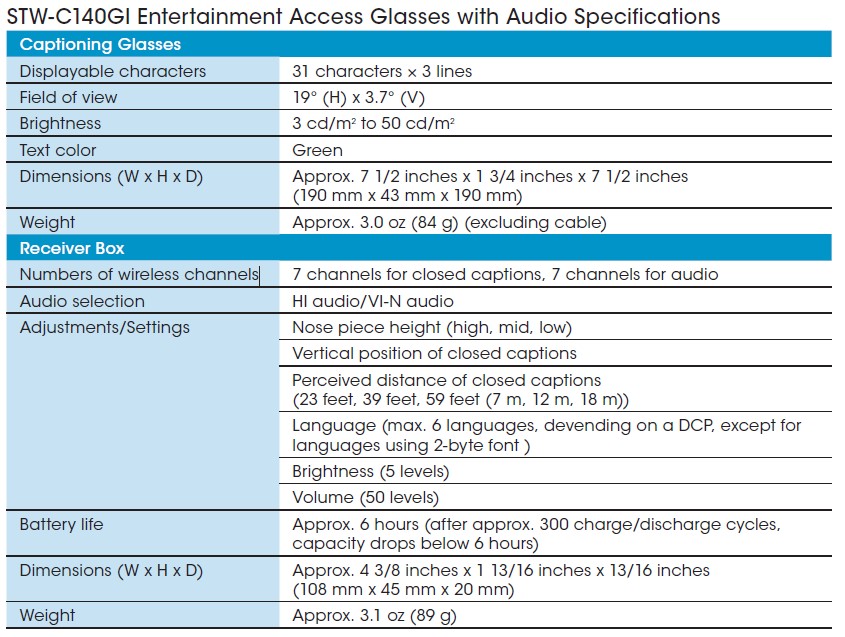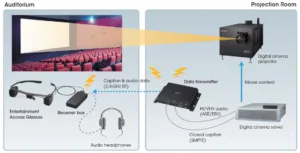While surfing the Internet during this past week, I came across a press release issued by Digital Cinema Solutions, a division of Sony Electronics Inc. (Los Angeles, CA). The topic of the announcement was the availability of the so-called Sony Entertainment Access Glasses, an application of AR to the movie theater. As soon as I looked into the topic it became clear that the press release was, in fact, really old – from 2012. None-the-less, since it was news-to-me, on-topic for Mobile Display Monitor and interesting, the editor of the newsletter was responsive to an article on the topic.
By wearing the Sony Entertainment Access Glasses lightweight see-through eyewear, users could see closed caption text that seemed to float about 10 feet (3.1m) in front of their eyes. The text seemed superimposed onto the movie picture that they were watching on screen. The company described this as “a natural subtitle movie experience.”
A video explaining and demonstrating the Sony Entertainment Access Glasses can be found at the end of this article. The composition of the system is illustrated in the figure below.
The Sony Entertainment Access Glasses System.
The system consists of the STW-C140GI Entertainment Access Glasses. Closed caption data was transmitted from a digital cinema server by the STWA-C101 Data Transmitter and received by the caption glasses’ receiver box via a radio frequency. The coverage area had a radius of about 40m. Specifications for the glasses include the following:

The glasses were reported as comfortably to wear over eye glasses. It was possible to view 3D movies by attaching removable polarizing filters to the glasses.
Sony’s Entertainment Access Glasses claimed to offer an experience without eye fatigue, enabling comfortable movie viewing for longer than two hours. The subtitles where reported as easy to read no matter where the user was seated in the auditorium and remained easy to read even when users changed their posture.
Sony’s Entertainment Access Glasses could support digital cinema servers from other manufacturers such as Doremi Labs Inc. and Dolby Laboratories Inc.
The Sony system also had the capability to present an audio track. This allowed the action on the screen to be described to blind users. Alternately, the audio track could be used to boost the audio levels of the movie for users that were hard of hearing. The audio could be listened to through third-party headphones. The receiver box could output to only one device at a time, either to the caption glasses or the headphones.
In the press release, it was reported that The Sony Entertainment Access System that was introduced to American moviegoers exclusively in theaters operated by the Regal Entertainment Group in April 2012.
The extent of commercial success experienced by the Sony Entertainment Access Glasses and other, similar products is beyond the scope of this article. Rather, given the advances in technology that have occurred in the five years since the debut of the Sony Entertainment Access Glasses, the capability of and the potential for specialized uses of AR would seem to be greater than ever. Meko will follow the news and report back to readers on developments. -Arthur Berman
ue 27

